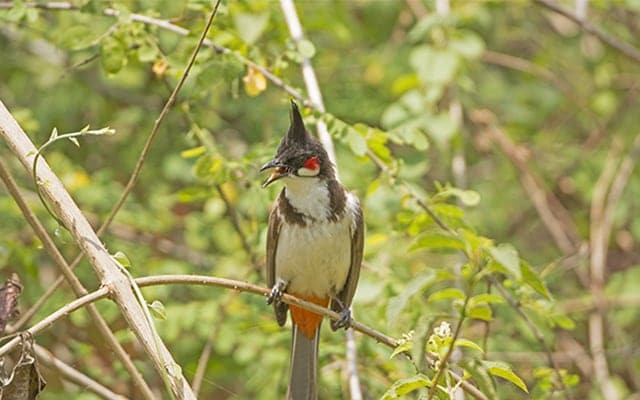- Home
- Where2Go
- Places
- Nagarhole
- Places to visit in Nagarhole
- Nagarhole National Park
Nagarhole National Park
NagarholeWodeyar Dynasty’s Hunting Ground
Overview
Established as a wildlife sanctuary in 1955, the park was declared the 37th Tiger reserve in 1999. It spreads across 247 square miles, in the Kodagu and Mysore district of Karnataka.
Suggested Duration - 2 – 3 hours
What To Expect?
Opt for the safari here to witness a wide range of wildlife like dhole (wild dog), sloth bear, hyena, spotted deer, sambar, barking deer, four-horned antelope, wild boar and more.
Tips
- The park is usually open from 6:00 a.m. to 9:00 a.m. and 3:00 p.m. to 6:00 p.m.
- Safari timings are from 06:00 a.m. to 08:00 a.m. and 3:00 p.m. to 5:00 p.m.
- Before visiting the park, make sure that the weather is suitable.
Nagarhole National Park Overview: A Top Choice for Nilgiris Wildlife Spotting
The Nagarhole National Park is a part of the Nilgiris Biosphere Reserve located by the Western Ghats' foothills. It has a diverse topography with dense to super-dense forestry, making it an ideal habitat to nurture wildlife. Tourists visit this wildlife reserve in large numbers to explore the diverse variety of animals and birds nurtured in the conserved environment. The most popular wildlife varieties to know about Safari to NagarholeNational Park include the likes of civets, sloth bears, flying foxes, four-horned antelopes, elephants, panthers, spotted deer, etc.
| is famous for | Diverse wildlife variety, rare animals like four-horned antelope, flying fox |
|---|---|
| Safari to Nagarhole National Park Timings | From 6 am to 8 am, 3 pm to 5 pm |
| Best Time to Visit | April to May, October to March |
| Safari to Nagarhole National Park Entry Fee | For Indian Tourists - INR 50; for foreign tourists - INR 1,500 |
| Safari to Nagarhole National Park Ticket Price | Bus Safari - INR 750 to INR 2,000, Jeep Safari - INR 9,500 for Indians, INR 10,000 for foreigners |
| Required Time | 2 to 3 hours |
| Popular Nearby Places | Dubare Elephant Camp, Abbey Falls, Madikeri Fort, Chikklihole, Glass Bridge |
Nagarhole National Park Travel Options
The safari to Nagarhole National Park height goes up to 3,150 feet, with ease of accessibility from across the Indian plains.
- The nearest airport from Nagarhole National Park is Mysore about 80 km from the city. From the airport, you can hire a cab to reach here.
- You can also reach the nearest railway station from here at 80 km located in Mysore. Other nearby stations to reach here include Hasan and Chamarajanagar railway stations.
- Various motorable roads also connect Nagarhole and Bangalore. Other connectivities include roadways to Hunsur, Madikeri, etc.
- On a 4-hour bus ride, you can reach Nagarhole from Mysore. These buses are available from Mysore's Central Bus Stand and drop you to the Nagarhole National Park entrance.
Things to Do on a Safari to Nagarhole National Park
- Take a scenic drive across the reserve to spot the Royal Bengal Tigers conserved here. Check out popular viewpoints on the way like Bylakuppe monastery.
- Take a walk through the nature trails of this national reserve surrounded in mystic beauty.
- Go on an evening safari of the national park, where you can hear the final calls of peacocks, spotted deer, sambar, etc.
- Explore the enchanting backwaters surrounding the Nagarhole National Park and capture panoramic pictures of untouched wilderness. You can also catch a glimpse of a herd of elephants bathing in these serene waters.
FAQs - Frequently Asked Questions about Nagarhole National Park
How to get a jeep safari in Nagarhole National Park?
How much does Nagarhole safari cost?
Which safari is best in Nagarhole?
How do you plan for the perfect trip to any destination?
How to explore a place by yourself?
How to choose a destination to travel to?





